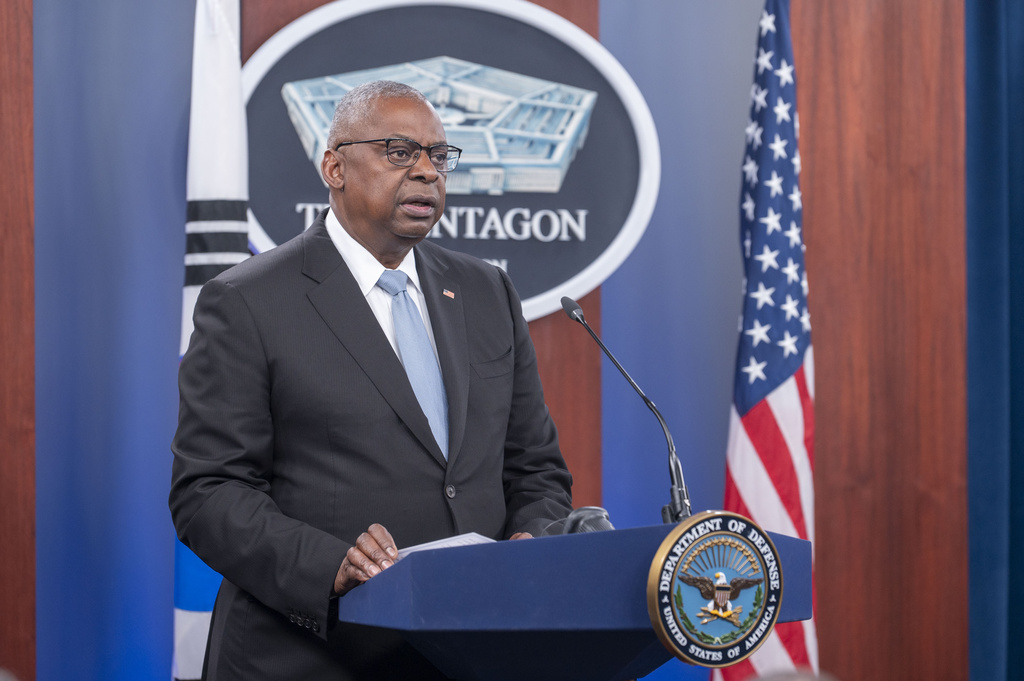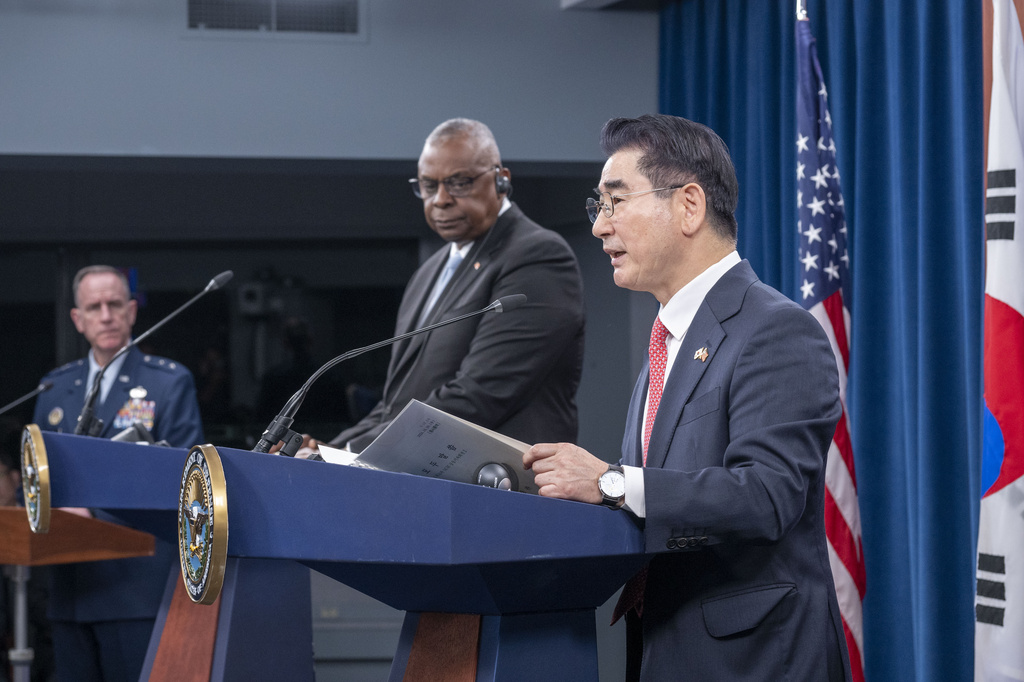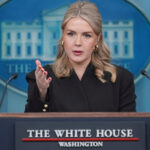North Korean Troops Bolster Russia’s Forces Near Ukraine Border \ Newslooks \ Washington DC \ Mary Sidiqi \ Evening Edition \ Defense Secretary Lloyd Austin confirmed that North Korean troops are joining Russian forces near Ukraine’s border, marking a troubling new phase in the Russia-Ukraine conflict. The troops, outfitted in Russian gear, are expected to participate in combat operations, with concerns about what military support North Korea might receive in return.

North Korean Troops Join Russian Forces in Ukraine Conflict: Quick Look
- Deployment Details: North Korean soldiers in Russian uniforms are moving to Ukraine’s border regions.
- Rising Global Concern: Leaders worry about the escalating conflict and possible North Korean support from Russia.
- Potential Combat Role: Austin noted a high likelihood of North Korean troops being deployed in combat.
- Geopolitical Implications: The alliance may push other nations to deepen involvement or deploy resources.
- Strategic Coordination: Austin and South Korean Defense Minister Kim agreed to increase joint military exercises in response.
Deep Look
Austin stated that some of these troops are already en route to Russia’s Kursk region, located near the Ukraine border, where Russian forces have struggled to contain Ukrainian advances. North Korean soldiers appear poised for combat, with Austin assessing the likelihood of their deployment as “pretty high.” He expressed worry that this strategic collaboration could lengthen or even intensify the war in Ukraine.
North Korea’s recent move has raised international alarms, with leaders questioning the potential effects on the regional stability and considering how Russia might compensate Pyongyang. Ukrainian U.N. Ambassador Sergiy Kyslytsya, speaking at an emergency U.N. Security Council meeting, reported that North Korea may deploy as many as 4,500 troops to the Ukrainian border by the end of the week. Combat involvement, he added, is anticipated to begin in November, suggesting a rapid increase in North Korea’s presence within the conflict zone.
The deployment also signals an increasingly close military relationship between North Korea and Russia. Austin and Kim voiced concerns that, in exchange for North Korean support, Moscow could provide Pyongyang with advanced weaponry, possibly including tactical nuclear technology or advanced ballistic missile systems. Both U.S. and South Korean officials are monitoring the situation closely, with Austin emphasizing the U.S. commitment to collaborating with allies to prevent further escalation. He hinted that North Korea’s involvement might prompt other nations to increase their engagement in the conflict, though he did not elaborate on specifics.
The Pentagon confirmed that North Korean soldiers have already started arriving in Russia’s Kursk region, where they will reportedly blend into existing Russian forces, likely those with ethnic Asian minorities such as Buryats. According to Kyslytsya, these North Korean soldiers are being integrated with Russian uniforms, small arms, and identity documents to obscure their true identities. He added that up to 12,000 North Korean troops are receiving specialized training across five bases in eastern Russia, with at least 500 officers and three generals among them.
The Kremlin has had to redirect resources to the Kursk region in response to Ukraine’s recent offensives, and the addition of North Korean soldiers reflects Moscow’s need for manpower amid significant troop losses. Austin remarked that Russia’s reliance on external forces, including those from North Korea and Iran, underscores the toll that the prolonged conflict has taken on its military capacity. “They’re doing this because President Putin has lost a lot of troops,” Austin said, highlighting the difficult choice Russia faces: either mobilize more domestic forces or recruit foreign support.
Estimates suggest that Russia has already received around 10,000 North Korean troops, though some sources believe the number may be higher. Kyslytsya provided further data, estimating up to 12,000 North Koreans are being prepped for deployment, suggesting Russia’s intent to integrate them fully into its regional forces near Ukraine. A Ukrainian official, speaking anonymously, confirmed that North Korean forces are stationed roughly 30 miles from the Ukrainian border, though details on their planned role remain confidential.
Austin and Kim used their Pentagon meeting to reinforce strategic defense agreements, committing to increased U.S.-South Korea joint military exercises and enhanced nuclear deterrence measures. These steps, documented in a Pentagon fact sheet, aim to improve rapid response to any escalation involving North Korea’s missile capabilities. Austin stressed the importance of close monitoring, promising continued dialogue with U.S. allies to dissuade Russia from deploying North Korean troops in direct combat roles.
On Thursday, Austin and Kim are set to meet with U.S. Secretary of State Antony Blinken and South Korean Foreign Minister Cho Tae-yul, underscoring the high-level coordination between the U.S. and South Korea. This collaboration reflects the gravity of North Korea’s military involvement in the Russia-Ukraine conflict and its implications for regional and global security.







